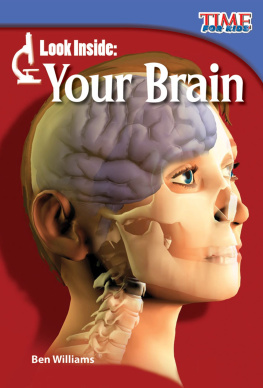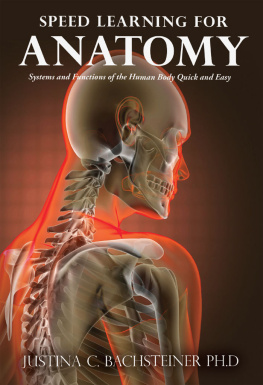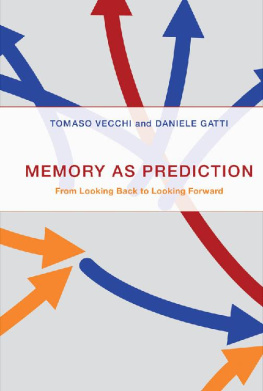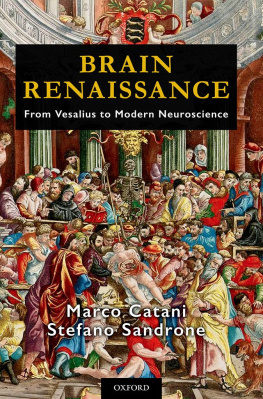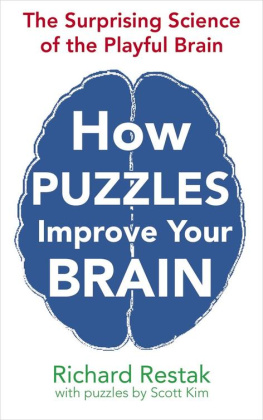The Cerebellum:
Brain for an Implicit Self
Masao Ito
Vice President, Publisher: Tim Moore
Associate Publisher and Director of Marketing: Amy Neidlinger
Acquisitions Editor: Russ Hall
Editorial Assistant: Pamela Boland
Senior Marketing Manager: Julie Phifer
Assistant Marketing Manager: Megan Graue
Cover Designer: Alan Clements
Managing Editor: Kristy Hart
Project Editor: Jovana San Nicolas-Shirley
Copy Editor: Charles Hutchinson
Proofreader: Kathy Ruiz
Indexer: Angela Martin
Senior Compositor: Gloria Schurick
Manufacturing Buyer: Dan Uhrig
2012 by Pearson Education, Inc.
Publishing as FT Press
Upper Saddle River, New Jersey 07458
FT Press offers excellent discounts on this book when ordered in quantity for bulk purchases or special sales. For more information, please contact U.S. Corporate and Government Sales, 1-800-382-3419, .
Company and product names mentioned herein are the trademarks or registered trademarks of their respective owners.
All rights reserved. No part of this book may be reproduced, in any form or by any means, without permission in writing from the publisher.
Printed in the United States of America
First Printing August 2011
Pearson Education LTD.
Pearson Education Australia PTY, Limited.
Pearson Education Singapore, Pte. Ltd.
Pearson Education Asia, Ltd.
Pearson Education Canada, Ltd.
Pearson Educacin de Mexico, S.A. de C.V.
Pearson EducationJapan
Pearson Education Malaysia, Pte. Ltd.
Library of Congress Cataloging-in-Publication Data
Ito, Masao, 1928
The cerebellum : brain for an implicit self / Masao Ito.
p. ; cm.
Includes bibliographical references.
ISBN-13: 978-0-13-705068-0 (hardback : alk. paper)
ISBN-10: 0-13-705068-2 (hardback : alk. paper)
1. CerebellumPhysiology. 2. Neuroplasticity. I. Title.
[DNLM: 1. Cerebellumphysiology. 2. Motor Neuronsphysiology. 3. Neuronal Plasticity. 4. Synaptic
Transmissionphysiology. WL 320]
QP379.I85 2012
612.827dc22
2011010870
ISBN-10: 0-13-705068-2
ISBN-13: 978-0-13-705068-0
To my wife, Midori Ito
Preface
The primary rationale for my writing this book is that I have been involved in research on the cerebellum for half a century and it seemed appropriate to share with younger generations of researchers how thrilling and dramatic this epoch has been, particularly since research on the cerebellum has advanced not only our understanding of this fascinating structure but also that of overall neuroscience. I also have another rationale, however, which is more implicit but no less compelling. This is the desire to know how and to what extent we might proceed toward the goal of completely understanding the human brain, not only the detail of its huge mass of neurons, but also the means by which it can generate human intelligence, which has evolved over millions of years. Current systems neurobiology addresses this issue to some extent, but available methodology and technology are limited and guiding hypotheses are still sparse. To this end, research on the cerebellum is on the forefront for asking the question How does our brain accomplish its most complex and sophisticated actions?
Forty-five years ago, I co-authored the monograph The Cerebellum as a Neuronal Machine with John Eccles and Jans Szentagothai. This book described several neuronal circuits of the cerebellum, using analytical techniques that had advanced greatly in the late 1950s and early 1960s. Seventeen years later, I wrote a monograph The Cerebellum and Neural Control. Its focus was on the role of long-term depression in the cerebellum and this structures control of the vestibulo-ocular reflex. Such work suggested to me that the cerebellum was capable of learning and thereby played an essential role in adaptive neural control. In that 1984 book, the cerebellum was viewed as an assembly of many modular units (microcomplexes), each of which constituted a neurocomputing machine embedded in a control system of the brainstem and/or spinal cord. The book also contained a germ of the idea that the cerebellum performed internal model-based controls that were delineated and formulated computationally a few years later (in 1987) by Mitsuo Kawato and his colleagues.
This 2011 monograph discusses advances made since 1984 in the overall study of neuronal circuits and the adaptive and model-based control of movement. It also presents new developments concerning the involvement of the cerebellum in motor actions and cognitive functions. The subtitle of the book, Brain for an Implicit Self, reflects my current view of the cerebellum. Its role in the adaptive control of movement is performed unconsciously. Even though voluntary movements, such as those needed to ski, skate, or play a piano, and so on, are performed under conscious awareness (of at least some components of the movements), there is no such awareness when these movements become more refined due to their practice. A similar situation prevails for our thoughts. When we think about some topic repeatedly, the thought becomes more and more implicit; that is, it requires less and less conscious effort, as in intuition. This suggests that the cerebellum aids the self in both movement and thought, but covertly, by use of its internal models. The question of just how neuronal circuits of the cerebellum can accomplish such an all-encompassing role will be a major challenge in the coming decades.
I wish to thank all the cerebellar researchers cited in this monograph, whether living or deceased. Their expertise embraced, or continues to embrace, both the traditional disciplines of anatomy, physiology, biochemistry, pharmacology, and pathology and the many newer subdisciplines of neuroscience that derive their merit from both the life and physical sciences. Over the years these disciplines have continued to generate both new experimental data and novel theories.
I am grateful to those who kindly permitted me to reproduce their illustrations in this monograph. I wish also to thank the many colleagues who spent some time in my laboratory at the University of Tokyo before 1989 and at the RIKEN Brain Science Institute after 1990. I am also greatly indebted to the University of Tokyo for strongly supporting my earlier research activity, particularly through the difficult period of campus disruption, and the RIKEN Brain Science Institute for providing me with such an excellent research environment.
In publishing this monograph, I am particularly thankful to Prof. Douglas G. Stuart, Regents Professor Emeritus of Physiology, University of Arizona, for his advice about my use of the English language and discussions on posture and locomotion mechanisms. I am also indebted to Drs. Soichi Nagao and Tadashi Yamazaki, RIKEN Brain Science Institute, for our many discussions about the content of this monograph.
Finally, I wish fervently that research on the cerebellum in the coming decades will be fruitful, particularly in clarifying its neuronal mechanisms in processing information of both a motor and a cognitive nature. Such progress will be a major step in the unlocking of brain mechanisms that support the implicit self.
Acknowledgments
Grateful thanks are due to the publishers and editors of the following journals for their generosity in giving permission for reproduction of figures: Annual Review of Neuroscience (Annual Reviews), Journal of Neurophysiology (American Physiological Society), Journal of Neuroscience (Society for Neuroscience), Journal of Physiology London (The Physiological Society, John Wiley & Sons), Nature Reviews Neuroscience (Nature Publishing Group), Proceedings of National Academy of Sciences USA (National Academy of Sciences USA), and Progress in Brain Research (Elsevier). Grateful thanks also goes to the Instituto de Neurobiologa Ramn y Cajal, Madrid, Spain.


